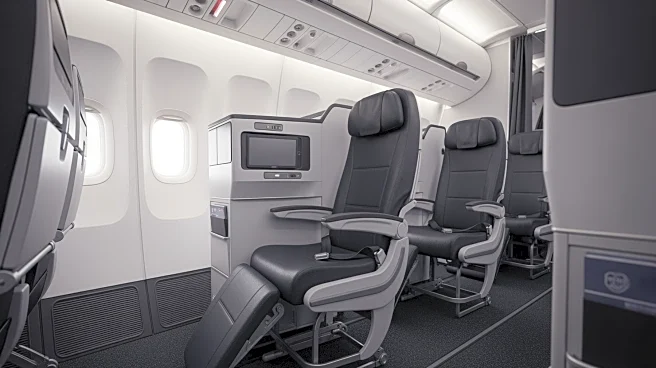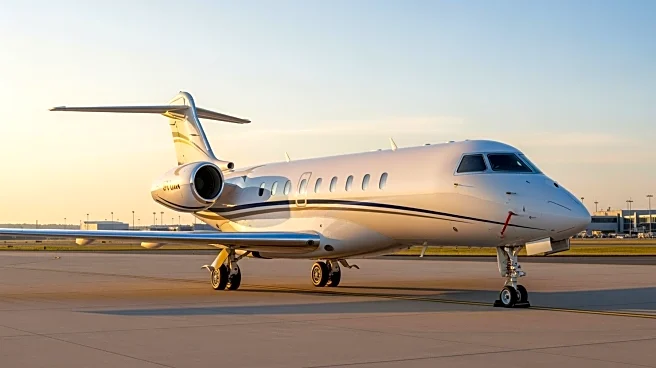What's Happening?
WestJet Airlines has announced a significant reconfiguration of its economy cabins on Boeing 737-8 MAX and 737-800 aircraft. The Canadian airline, which operates flights to 20 U.S. states and Washington,
D.C., is introducing a range of seating options that include non-reclining seats. This change is part of a broader strategy to offer diverse seating preferences, including Premium seating with additional amenities and legroom. The redesign allows WestJet to add an extra row of seats, thereby reducing the cost per seat and maintaining affordable fares. The first redesigned aircraft is expected to enter service this year, with the rest following early next year.
Why It's Important?
The overhaul of WestJet's economy cabins reflects a growing trend in the airline industry to maximize passenger capacity while offering varied pricing options. By eliminating reclining seats, WestJet aims to preserve personal space and reduce in-flight confrontations, a common issue among travelers. This move could influence other airlines to adopt similar strategies, potentially reshaping passenger expectations and experiences. The introduction of high-speed Wi-Fi across the fleet further enhances the travel experience, catering to the increasing demand for connectivity. These changes could impact U.S. travelers who frequently use WestJet for cross-border flights, offering them more choices and potentially lower fares.
What's Next?
WestJet plans to complete the cabin redesign across 43 aircraft acquired from defunct airlines Swoop, Lynx, and Sunwing. The rollout of these changes will continue into next year, with the first aircraft entering service soon. As the airline implements these changes, it may face reactions from passengers accustomed to traditional reclining seats. The success of this initiative could lead to further innovations in cabin design and pricing strategies within the airline industry. Stakeholders, including passengers and competitors, will be closely monitoring the impact of these changes on customer satisfaction and market dynamics.












